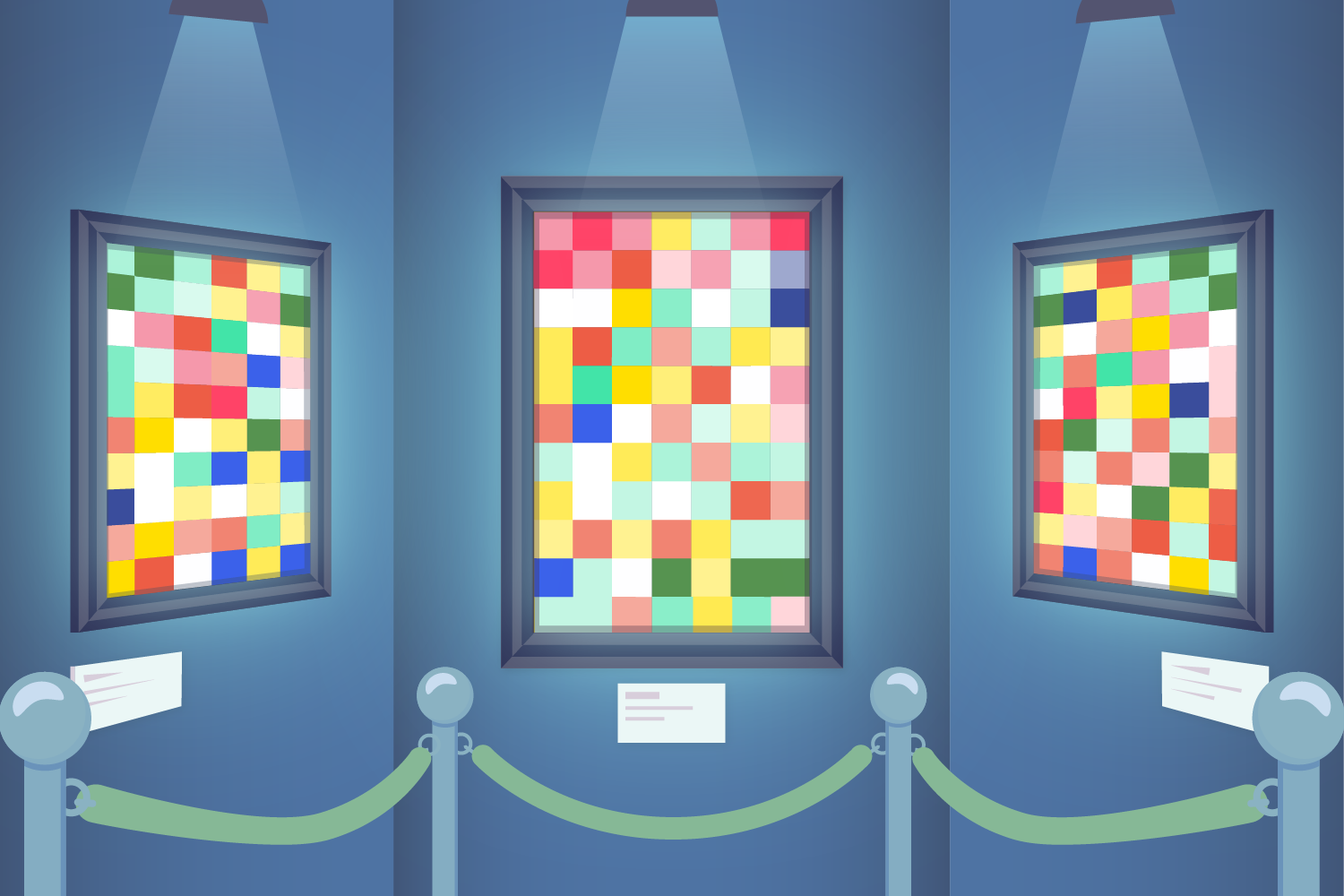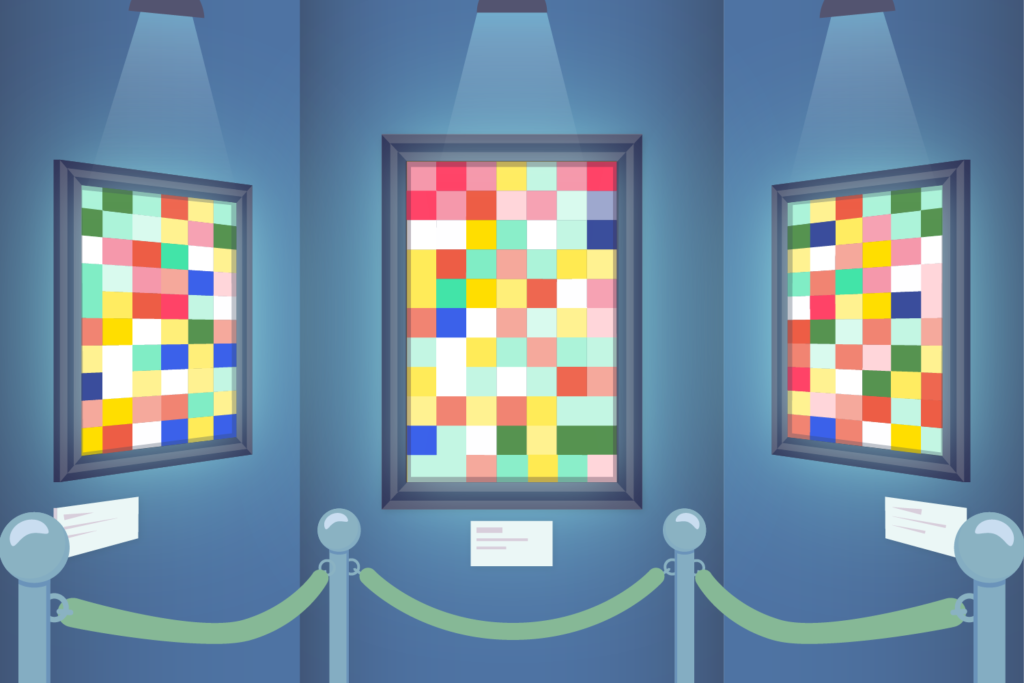THE POPULARITY of NFTs (non-fungible tokens) worldwide can still be highly confusing to the average person—after all, aren’t these just JPEGs? However, the rise of blockchain and cryptocurrency showcases how highly valued these digital objects now are as thousands buy them at rocket-high prices.
This is because these collectibles are becoming subject to the fluctuating demands of the art market, just like a physical piece. It is too early to say whether NFTs will improve the art ecosystem or turn out to be an invasive species.
NFTs in the Philippines
The rate at which NFTs are penetrating the local market is startling, but a closer look at the cryptocurrency developments of recent years may provide clarity. To start, NFTs are unique digital collectibles that are secured and verified by the blockchain, a shared ledger that “facilitates the process of recording transactions and tracking assets in a business network.” This technology doesn’t only make the existence of cryptocurrency possible; it also allows for transactions to be pursued with more safety, transparency, and immediacy.
Add that to the possibility of a high return in investment and it is unsurprising to see that the Philippines is now one of the fastest adopters of cryptocurrency. With most NFT marketplaces utilizing the Ethereum network to power transactions, the developments of cryptocurrency are inseparable from that of NFTs.
The promise of security and income that investing in NFTs offers is met with open arms by many in a local art sector struggling because of the pandemic. Fine Arts Instructor Bianca Ma-alat notes how our present policies and framework for the arts are severely lacking, especially in its sustainability for the workforce. It is one where artists and practitioners carry the brunt of the work themselves. NFTs appear to fill in such gaps, especially for digital artists.
Prior to this, local digital artists earned from commissions and freelance illustrations like Anya Nellas (4 BFA ID). She shared that while appreciation for digital artists has grown, there are still many instances where they are undervalued, overworked, and scammed. A 2021 statement by the Concerned Artists of the Philippines responding to the Philippine Creative Industries Bill echoes Nellas’ point in noting how present attempts to amend local arts policy falls short in creating provisions that ensure benefits for workers of the industry.
NFT artist Doodle Joe PH, whose real name is Jose Victor, presents another case. As an artist who works with traditional (painting and sculpture) and nontraditional mediums (digital art and 3D graphics), he expressed that NFTs can provide a more financially rewarding way to sell one’s art and share it with more people. The huge amount of money people make with dabbling in NFTs is certainly a temptation. In most regions, NFT games such as Axie Infinity reap potential earnings above minimum wage.
This potential found in the NFT gaming sector is one local artists are banking on in the production of their art. Victor shares that—although he had to learn necessary skills such as minting, marketing, and creating roadmaps—NFTs have proved to be a viable alternative.
On an even deeper level, Ma-alat points out that there is nothing new about the Filipino artist’s drive for self-determination, sharing their work with a community, and acting against a restrictive framework. In the 90’s, the emergence of artist-run spaces allowed artists the freedom to create art without depending on intermediaries such as galleries and other art institutions. This rings a similar bell to one argument made for NFTs: They dispense of the need for middlemen.
Evidently, that may no longer be the case with commercial galleries and events such as Art Fair Philippines participating in NFT circulation and once again acting as middlemen between the artist and buyer. With the emergence of “spaces” such as Narra Gallery on Facebook’s Metaverse, NFTs don’t seem to be going anywhere. This proliferation emphasizes the need to create a robust framework for the arts which has been a problem since the 90s.
The art and the artist
Among the ethical issues that have plagued the art world is the practice of flipping—where a buyer quickly resells an acquired piece to generate profit. Unsurprisingly, the NFT market is plagued by this, and a quick “how to flip NFTs” Google search yields plenty of resources. Historically, art has also been viewed as a luxury for the wealthy to patronize.
The art market is very familiar with the act of “conspicuous consumption” or the purchase of goods solely to display wealth. For Illustrator Renzo*, this elitism has transferred well to the NFT buy-and-sell because art in galleries and NFTs function very similarly.
Renzo understands the desire of NFT artists to earn through their art alone in a secured platform, yet he still finds himself on the fence about joining the hype. “I don’t want to participate in a culture of flipping where people would buy my art just to sell it,” Renzo explained. “[But] you see people make life-changing amounts of money that help them cross the threshold between poverty and [wealth].”
Ironically, Renzo has described art to be a strategy for money laundering as well, which is a new but growing concern with NFTs. “[Artworks] are not meant to serve as functions…they’re meant to be nice, look pretty, and evoke feeling,” he explained.
Digital designer and illustrator Katie Abesamis also finds that NFTs are less valued as art and more as stocks. “I’m speaking as someone who really values art–it’s more of like a cash cow to get funds,” she stated.
NFTs and art as commodity
Unfortunately, this trend of treating art as “cash cows” is not unique to the workings of NFTs. The commercialization of art has existed for centuries, with artists utilizing their skills to make ends meet. The concern lies in whether the commodification of art as a whole, not limited to NFTs, ends up cheapening the work. In fact, maximizing NFTs for profit has led to a crisis of art theft.
NFTs were initially designed to help artists protect their work but the growing piracy makes it difficult to see whether NFTs truly do protect artists as intended. Abesamis recalls how her friend had her artwork stolen and sold as an NFT without permission. “They say that NFTs are really good because you earn a lot of money from them, but where is the security of the profit, where is the security [from] scams?” she said.
Meanwhile, Jose remains confident in blockchain security. “Marketplaces will not allow a person to mint the same NFT in another marketplace. There are scammers out there, [but they are promptly] banned and the questionable NFT will be deleted,” he stated. “This protects the original artist from thieves and a buyer is ensured that the NFT [they bought or own] is an original.”
In a country where art–especially digital work–is constantly undervalued, being able to earn from one’s work may take precedence over concerns of commodification and selling out. The art ecosystem has without a doubt been altered by this new online species; however, creatives should be able to make a livable wage without feeling subjected to moral crises. With or without NFTs, our artists deserve better.
*Editor’s Note: The interviewee’s name has been changed as per request.






